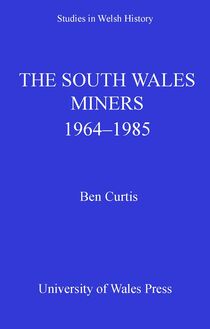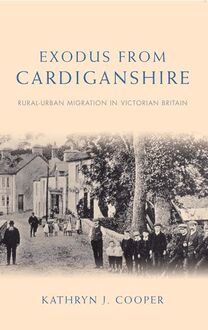-
 Univers
Univers
-
 Ebooks
Ebooks
-
 Livres audio
Livres audio
-
 Presse
Presse
-
 Podcasts
Podcasts
-
 BD
BD
-
 Documents
Documents
-
- Cours
- Révisions
- Ressources pédagogiques
- Sciences de l’éducation
- Manuels scolaires
- Langues
- Travaux de classe
- Annales de BEP
- Etudes supérieures
- Maternelle et primaire
- Fiches de lecture
- Orientation scolaire
- Méthodologie
- Corrigés de devoir
- Annales d’examens et concours
- Annales du bac
- Annales du brevet
- Rapports de stage
La lecture à portée de main
Vous pourrez modifier la taille du texte de cet ouvrage
Découvre YouScribe en t'inscrivant gratuitement
Je m'inscrisDécouvre YouScribe en t'inscrivant gratuitement
Je m'inscrisEn savoir plus
Vous pourrez modifier la taille du texte de cet ouvrage
En savoir plus

Description
Sujets
Informations
| Publié par | University of Wales Press |
| Date de parution | 15 juin 2011 |
| Nombre de lectures | 0 |
| EAN13 | 9781783164677 |
| Langue | English |
| Poids de l'ouvrage | 2 Mo |
Informations légales : prix de location à la page 0,0650€. Cette information est donnée uniquement à titre indicatif conformément à la législation en vigueur.
Extrait
STUDIES IN WELSH HISTORY
Editors
RALPH A. GRIFFITHS CHRIS WILLIAMS
ERYN M. WHITE
_________
31
EXODUS FROM CARDIGANSHIRE
EXODUS FROM
CARDIGANSHIRE
RURAL-URBAN MIGRATION IN
VICTORIAN BRITAIN
by
KATHRYN J. COOPER
Published on behalf of the
University of Wales -->
CARDIFF UNIVERSITY OF WALES PRESS 2011
© Kathryn J. Cooper, 2011
All rights reserved. No part of this book may be reproduced in any material form (including photocopying or storing it in any medium by electronic means and whether or not transiently or incidentally to some other use of this publication) without the written permission of the copyright owner except in accordance with the provisions of the Copyright, Designs and Patents Act 1988. Applications for the copyright owner s written permission to reproduce any part of this publication should be addressed to the University of Wales Press, 10 Columbus Walk, Brigantine Place, Cardiff, CF10 4UP
www.uwp.co.uk
British Library Cataloguing-in-Publication Data
A catalogue record for this book is available from the British Library.
ISBN 978-0-7083-2399-1
e-ISBN 978-1-78316-467-7
The right of Kathryn J. Cooper to be identified as author of this work has been asserted by her in accordance with sections 77 and 79 of the Copyright, Designs and Patents Act 1988.
Cover image: Llannarth Bridge c.1890; by permission Ceredigion County Library.
SERIES EDITORS FOREWORD
Since the foundation of the series in 1977, the study of Wales s history has attracted growing attention among historians internationally and continues to enjoy a vigorous popularity. Not only are approaches, both traditional and new, to the study of history in general being successfully applied in a Welsh context, but Wales s historical experience is increasingly appreciated by writers on British, European and world history. These advances have been especially marked in the university institutions in Wales itself.
In order to make more widely available the conclusions of original research, much of it of limited accessibility in postgraduate dissertations and theses, in 1977 the History and Law Committee of the Board of Celtic Studies inaugurated this series of monographs, Studies in Welsh History. It was anticipated that many of the volumes would originate in research conducted in the University of Wales or under the auspices of the Board of Celtic Studies, and so it proved. Although the Board of Celtic Studies no longer exists, the University of Wales continues to sponsor the series. It seeks to publish significant contributions made by researchers in Wales and elsewhere. Its primary aim is to serve historical scholarship and to encourage the study of Welsh history.
To my parents, Edwin and Elaine Rothwell
CONTENTS
SERIES EDITORS FOREWORD
FIGURES
TABLES
ACKNOWLEDGEMENTS
ABBREVIATIONS
INTRODUCTION
I Nineteenth-century Cardiganshire: its economy and society
II The role of the lead-mining industry
III The decision to move
IV Rural out-migration trends: the census evidence
V The move to south Wales
VI The lure of London
VII The move to Liverpool and the north-west
VIII Emigration
IX Conclusion
BIBLIOGRAPHY
FIGURES
1.1 Cardiganshire in the nineteenth century
1.2 Population of Cardiganshire in the long nineteenth century
1.3 Population of Cardiganshire towns, 1801-1911
1.4 Cardiganshire s rural and urban population trends, 1801-1911
1.5 Derelict dwelling, north Cardiganshire uplands
2.1 Metal ore wagon at Bronfloyd disused lead mine
2.2 Population trends of four townships in northern Cardiganshire, 1801-1911
2.3 Earth-walled cottage in a former lead-mining township, north Cardiganshire
2.4 Nineteenth-century Cardiganshire showing Trefeirig township in the parish of Llanbadarn Fawr
4.1 Nineteenth-century registration districts of Cardiganshire
4.2 Residential distribution of Cardiganshire migrants in 1851
4.3 Residential distribution of Cardiganshire migrants in 1871
4.4 Residential distribution of Cardiganshire migrants in 1891
4.5 Residential distribution of Cardiganshire migrants in 1911
4.6 Cardiganshire s main migrant destinations, excluding Glamorgan, 1851-1911
5.1 Cardiganshire migrants enumerated in Carmarthenshire, Glamorgan and Monmouthshire, 1851-1911
5.2 Cardiganshire migrants by gender enumerated in Glamorgan, 1861-1911
5.3 Age profile of the Cardiganshire migrants in the 1881 Glamorgan census sample
5.4 Age profile of the Cardiganshire migrants in the 1881 Glamorgan census sample living in the Rhondda
6.1 Cardiganshire migrants enumerated in London, 1861-1911
6.2 D. Lloyd and Sons - a typical London Welsh dairy/shop
7.1 Cardiganshire migrants enumerated in the north-west, 1861-1911
7.2 Age profile of the Cardiganshire migrants living in the north-west in 1881
8.1 Transcript of George Drinkwater s letter of 9 October 1879
8.2 Advertisement for emigration on the brig Fanny, 1818
8.3 Origins, where identified, of Cardiganshire s nineteenth-century emigrants to Jackson and Gallia counties, Ohio
8.4 Painting of the brig Credo near the entrance to Aberystwyth harbour
8.5 The Er Cof ring made for Jane Lewis
TABLES
1.1 Percentage of holdings and of acreage owned by the occupier
1.2 Selected male occupational trends: 1851, 1871 and 1891
2.1 Productivity of Cardiganshire s metal mines for selected years, 1845-1901
2.2 Numbers employed in Cardiganshire s metal mines, 1851 and 1871
3.1 Selected male occupations in Cardiganshire in 1851 and 1871
3.2 Males employed in Cardiganshire s main maritime occupations, 1851-1911
3.3 Number of persons living more than two per room in 1891 as a percentage of the county/country populations
4.1 Cardiganshire population trends by registration district, 1851 to 1871
4.2 Cardiganshire population trends by registration district, 1881 to 1891
4.3 Main occupations of Cardiganshire s rural population, 1871 and 1891
4.4 Numbers of males employed in Cardiganshire in the main rural trades and crafts in 1871 and 1891
4.5 Main male occupations of Cardiganshire s rural population in 1901 and 1911
5.1 Male/female sex ratio of the Cardiganshire migrants in Glamorgan, 1861-1911
5.2 Comparison of male/female sex ratio of Cardiganshire migrants in Cardiff, Swansea and Rhondda in l88l
6.1 Number of carpenters and joiners enumerated in Cardiganshire, 1831-1911
8.1 Numbers of Cardiganshire parishes and townships showing a decrease in population between 1831 and 1851
8.2 Estimates of emigration from Cardiganshire as a percentage of the total native population, 1861-1900
ACKNOWLEDGEMENTS
This book would not have seen the light of day without the help, support and encouragement of many people, and in particular Rob Cooper, Richard Thompson, Nicola Thompson, Professor Keith Snell, Professor Ralph Griffiths, Aelwyn Rees, Sylvia Garner and Christine Clarke.
I am most grateful to the Friends of the Centre for English Local History, Leicester, for their generous financial assistance towards the funding of my research.
Finally, I should like to say a special thank you to the interviewees whose family histories have helped to give this book a human dimension.
Image credits:
Mrs H. J. Lloyd: Lloyd s Dairy ( figure 6.2 ).
Ceredigion County Library: The brig Credo ( figure 8.4 ).
Dewi Thomas Jones: Er Cof ring ( figure 8.5 ).
All other photographs by the author.
ABBREVIATIONS
CN
Cambrian News
Cards.
Cardiganshire
Carms.
Carmarthenshire
Cumb.
Cumberland
Lancs.
Lancashire
Mer.
Merioneth
Mon.
Monmouthshire
Montgom.
Montgomeryshire
NL.
National Library of Wales
Pembs.
Pembrokeshire
Warks.
Warwickshire
Yorks.
Yorkshire
INTRODUCTION
One of the best indicators of the pattern of experience of a place is its population levels. 1
The nineteenth century witnessed a shift in economic emphasis in Britain from agriculture to commerce and industry. No longer subject to the Malthusian checks of an agriculturally based economy the population rise that had begun in the mid-eighteenth century continued at an unparalleled rate of natural increase throughout the nineteenth. 2 Despite considerable emigration, the population of England and Wales doubled between 1801 and 1851 and then again by 1911. 3 Even so, it was not until mid-century that the urban population of England and Wales finally began to exceed that of the rural areas. 4 This urban growth, however, was due to more than just natural increase: it was continually being augmented by the constant flow of the country population into the town . 5 The transition from a rural to an urban society was thus accompanied by accelerating population growth, new forms of economic organization and by lasting changes in the distribution of the people of Britain. 6 Population studies have demonstrated that short-distance moves within rural areas had long been the norm and that towns of the pre-industrial era had depended on a continuous flow from the country merely to maintain their numbers. 7 These long-established migration patterns were now being disrupted by the escalating trend of the movement away from rural areas.
In 1911 there were just six counties in England and Wales whose populations were smaller than in 1841, and one of these was Cardiganshire. 8 The population of Cardiganshire mirrored the national increase until 1871 but thereafter declined dramatically, suggesting that considerable out-migration was taking place, and the agricultural nature of the county suggests that the majority of that movement was away from the land. 9 This raises important questions: what factors operating within Victorian Cardiganshire influenced the decision to move and the choice of destination; and to what extent was migration influenced by socio-economic features unique to that county? It has long been recognized that some factors responsible for the nineteenth-century rural exodus were general to all the rural areas of England and Wales.
-
 Univers
Univers
-
 Ebooks
Ebooks
-
 Livres audio
Livres audio
-
 Presse
Presse
-
 Podcasts
Podcasts
-
 BD
BD
-
 Documents
Documents
-
Jeunesse
-
Littérature
-
Ressources professionnelles
-
Santé et bien-être
-
Savoirs
-
Education
-
Loisirs et hobbies
-
Art, musique et cinéma
-
Actualité et débat de société
-
Jeunesse
-
Littérature
-
Ressources professionnelles
-
Santé et bien-être
-
Savoirs
-
Education
-
Loisirs et hobbies
-
Art, musique et cinéma
-
Actualité et débat de société
-
Actualités
-
Lifestyle
-
Presse jeunesse
-
Presse professionnelle
-
Pratique
-
Presse sportive
-
Presse internationale
-
Culture & Médias
-
Action et Aventures
-
Science-fiction et Fantasy
-
Société
-
Jeunesse
-
Littérature
-
Ressources professionnelles
-
Santé et bien-être
-
Savoirs
-
Education
-
Loisirs et hobbies
-
Art, musique et cinéma
-
Actualité et débat de société
- Cours
- Révisions
- Ressources pédagogiques
- Sciences de l’éducation
- Manuels scolaires
- Langues
- Travaux de classe
- Annales de BEP
- Etudes supérieures
- Maternelle et primaire
- Fiches de lecture
- Orientation scolaire
- Méthodologie
- Corrigés de devoir
- Annales d’examens et concours
- Annales du bac
- Annales du brevet
- Rapports de stage




















